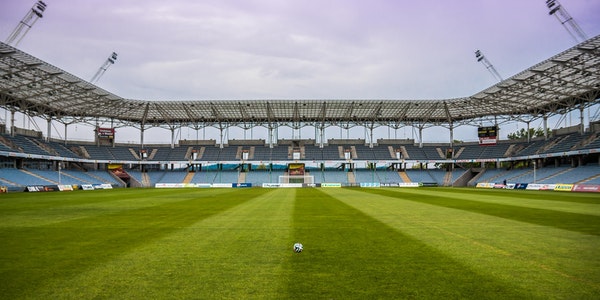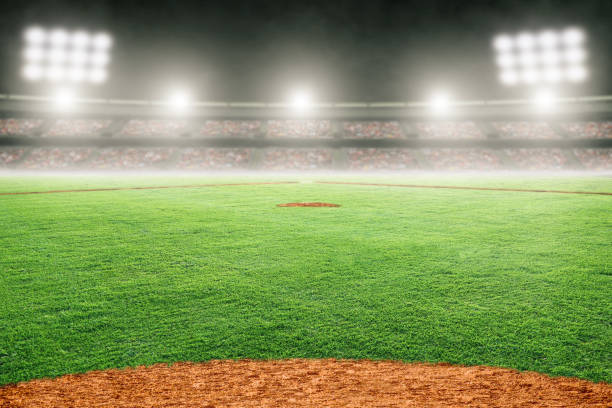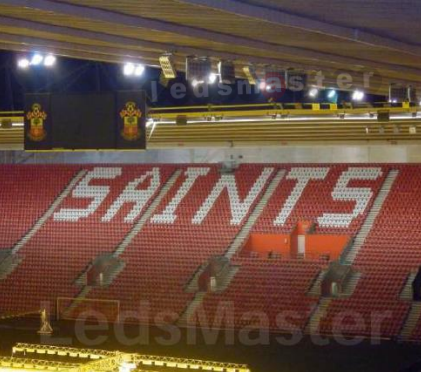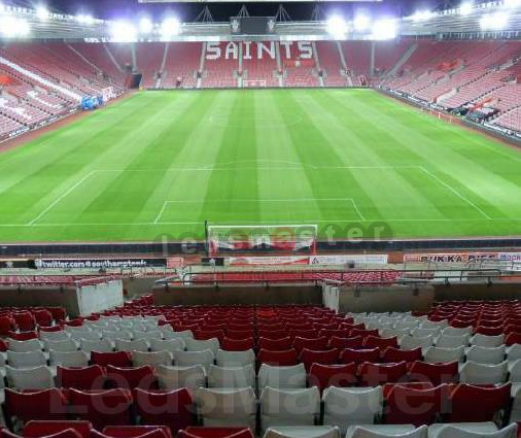- Olympic Games: LED lighting has become a standard feature in Olympic venues, offering energy-efficient illumination for various sports competitions and ceremonies. Host cities like Beijing (2008), London (2012), Rio de Janeiro (2016), and Tokyo (2020/2021) have incorporated LED lighting systems into their stadiums, arenas, and outdoor venues, providing optimal visibility and atmosphere for athletes and spectators alike.
- FIFA World Cup: LED lighting technology has been prominently featured in FIFA World Cup stadiums, enhancing the visual experience for millions of viewers worldwide. Host countries such as South Africa (2010), Brazil (2014), Russia (2018), and Qatar (2022) have invested in state-of-the-art LED lighting systems to illuminate matches, create immersive environments, and optimize broadcast quality for television audiences.
- UEFA European Championship: LED lighting has been integrated into UEFA European Championship stadiums to provide dynamic lighting effects, enhance visibility, and create memorable experiences for fans attending matches. Host countries such as France (2016) and multiple cities across Europe (2020/2021) have utilized LED technology to illuminate iconic stadiums and showcase the excitement of the tournament.
- Tennis Grand Slam Tournaments: LED lighting has transformed the lighting infrastructure of tennis stadiums hosting Grand Slam tournaments such as Wimbledon, the US Open, the French Open, and the Australian Open. LED fixtures offer consistent lighting quality, reduced glare, and customizable lighting options for day and night matches, ensuring optimal playing conditions for tennis players and spectators.
- Formula 1 Racing: LED lighting has been utilized in Formula 1 racing circuits to illuminate tracks, enhance visibility, and create spectacular nighttime races. Events such as the Abu Dhabi Grand Prix and the Singapore Grand Prix feature advanced LED lighting systems that showcase the speed and excitement of Formula 1 racing under the lights.
Overall, LED lighting technology has become an integral part of international sporting events, offering energy-efficient, customizable, and visually stunning illumination solutions that elevate the experience for participants and audiences alike. From the Olympic Games to major championships and tournaments, LED technology continues to set new standards for sports lighting on a global scale.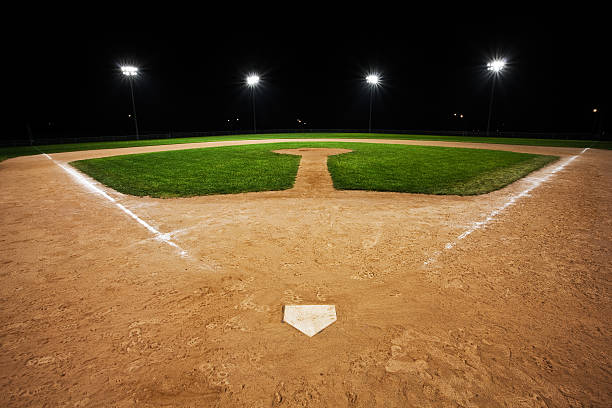
V. Challenges and Considerations
A. Initial investment and cost considerations
When considering the adoption of LED lighting technology for outdoor sporting events, there are several initial investment and cost considerations that organizers and venue owners should take into account:
- Upfront Equipment Costs: LED lighting fixtures typically have a higher upfront cost compared to traditional lighting sources such as metal halide or high-pressure sodium lamps. Organizers need to budget for the purchase of LED fixtures, including the cost of luminaires, control systems, wiring, and installation labor.
- Retrofitting vs. New Installations: Depending on the existing lighting infrastructure, organizers may need to decide between retrofitting existing fixtures with LED technology or installing entirely new LED lighting systems. Retrofitting may involve additional costs for conversion kits, labor, and compatibility assessments, whereas new installations may require higher upfront investments but offer greater long-term benefits.
- Return on Investment (ROI): Organizers should consider the potential return on investment associated with LED lighting technology, including energy savings, maintenance cost reductions, and extended lifespan compared to traditional lighting sources. Calculating the payback period for LED investments can help determine the financial viability of transitioning to LED lighting systems.
- Financing Options: To mitigate the upfront costs of LED lighting upgrades, organizers may explore financing options such as leasing, loans, or energy performance contracts (EPCs). These financing mechanisms allow organizers to spread out the costs of LED investments over time while realizing immediate energy savings and operational benefits.
- Energy Efficiency Incentives: Many governments, utility companies, and environmental organizations offer incentives, rebates, and grants for energy-efficient lighting upgrades, including LED installations. Organizers should research available incentive programs in their region and leverage financial assistance to offset the initial investment in LED lighting technology.
- Total Cost of Ownership (TCO): In addition to upfront equipment costs, organizers should consider the total cost of ownership (TCO) associated with LED lighting systems over their lifecycle. TCO factors in ongoing operational expenses such as energy consumption, maintenance, replacement bulbs, and disposal costs, providing a comprehensive assessment of the economic benefits of LED technology.
- Long-Term Savings and Benefits: While the initial investment in LED lighting technology may be higher compared to traditional lighting sources, the long-term savings and benefits can outweigh upfront costs. LED fixtures offer energy savings, reduced maintenance requirements, longer lifespan, and improved lighting quality, resulting in lower operating costs and higher performance over time.
Overall, organizers should carefully evaluate the initial investment and cost considerations associated with LED lighting technology, taking into account factors such as upfront equipment costs, ROI, financing options, incentives, TCO, and long-term savings and benefits. By conducting a thorough cost-benefit analysis, organizers can make informed decisions about transitioning to LED lighting systems for outdoor sporting events.
B. Maintenance and longevity
Maintenance and longevity are important factors to consider when implementing LED lighting technology for outdoor sporting events:
- Longevity: LED lighting fixtures have a much longer lifespan compared to traditional lighting sources such as incandescent, fluorescent, or HID lamps. LED fixtures can last tens of thousands of hours, depending on usage patterns and environmental conditions. This longevity reduces the frequency of bulb replacements and minimizes downtime for maintenance, resulting in cost savings and improved reliability for outdoor sporting venues.
- Reduced Maintenance Costs: The longer lifespan of LED lighting fixtures translates to reduced maintenance costs for outdoor sporting facilities. LED fixtures require less frequent replacement, resulting in lower labor expenses, fewer replacement bulbs, and reduced maintenance downtime. Additionally, LED fixtures are more durable and resistant to shock, vibration, and environmental factors, further reducing the need for maintenance and repairs.
- Minimal Lumen Depreciation: LED lighting technology maintains its brightness and performance over time with minimal lumen depreciation. Unlike traditional lighting sources that experience gradual degradation in light output, LEDs maintain consistent illumination levels throughout their lifespan, ensuring optimal visibility and performance for outdoor sporting events.
- Modular Design: Many LED lighting fixtures feature a modular design that allows for easy replacement of individual components such as LED modules, drivers, and optics. This modular design simplifies maintenance and repairs, as specific components can be replaced without replacing the entire fixture. Modular LED fixtures also offer flexibility for future upgrades or customization.
- Smart Monitoring and Maintenance Systems: Some LED lighting systems are equipped with smart monitoring and maintenance features that enable remote diagnostics, performance tracking, and predictive maintenance. These advanced systems can detect issues such as faulty LEDs, overheating, or power fluctuations, allowing maintenance staff to address problems proactively before they escalate.
- Warranty Coverage: LED lighting manufacturers typically offer warranty coverage for their products, providing assurance of quality and performance. Organizers should review warranty terms and conditions to understand coverage for components, labor, and maintenance services. Warranty coverage can provide added peace of mind and financial protection against unexpected maintenance costs.
Overall, the longevity and reduced maintenance requirements of LED lighting technology make it an attractive option for outdoor sporting events seeking to minimize operational expenses, enhance reliability, and improve the overall lighting infrastructure of sports facilities. By investing in LED lighting systems, organizers can achieve cost savings, sustainability benefits, and long-term performance advantages for their venues.
C. Environmental impact and sustainability
LED lighting technology offers several environmental benefits and contributes to sustainability in outdoor sporting events:
- Energy Efficiency: LED lighting fixtures are highly energy-efficient, consuming significantly less electricity compared to traditional lighting sources like incandescent, fluorescent, or HID lamps. The lower energy consumption of LEDs reduces greenhouse gas emissions and lowers the carbon footprint of outdoor sporting events, supporting sustainability goals and environmental conservation efforts.
- Reduced Carbon Emissions: The energy savings achieved through the adoption of LED lighting technology result in reduced carbon emissions associated with electricity generation. By minimizing energy consumption, LED lighting helps mitigate climate change and air pollution, contributing to a cleaner and healthier environment for communities hosting outdoor sporting events.
- Resource Conservation: LED lighting fixtures have a longer lifespan and require fewer replacements compared to traditional lighting sources, reducing the consumption of raw materials and natural resources. LED technology also eliminates hazardous materials such as mercury found in some traditional lighting sources, further promoting resource conservation and environmental protection.
- Light Pollution Reduction: LED lighting technology allows for precise control over light direction and distribution, minimizing light spillage and reducing light pollution in surrounding areas. By directing illumination where it is needed most, LEDs help preserve natural habitats, protect nocturnal wildlife, and minimize disruption to ecosystems near sports facilities.
- Sustainable Practices: The adoption of LED lighting technology aligns with sustainable practices and green building standards, promoting environmental stewardship and responsible resource management in outdoor sporting events. LED fixtures are designed for durability, recyclability, and energy efficiency, supporting sustainability initiatives and demonstrating a commitment to environmental responsibility.
- Regulatory Compliance: LED lighting systems comply with energy efficiency regulations and environmental standards established by governments and regulatory agencies worldwide. By choosing LED technology, organizers ensure compliance with sustainability requirements and contribute to the attainment of environmental targets set by local and international authorities.
- Public Perception and Image: Adopting LED lighting technology for outdoor sporting events enhances the public perception and image of event organizers and sports facilities as environmentally conscious and socially responsible entities. LED technology demonstrates a commitment to sustainability, attracts eco-conscious sponsors and partners, and fosters positive community engagement and support.
Overall, LED lighting technology offers significant environmental benefits and promotes sustainability in outdoor sporting events by reducing energy consumption, minimizing carbon emissions, conserving resources, and mitigating light pollution. By embracing LED technology, organizers can create more sustainable and environmentally friendly sporting events that benefit communities, ecosystems, and future generations.
VI. Future Trends and Innovations
A. Advances in LED technology
Advances in LED technology have led to continuous improvements in performance, efficiency, and versatility, making LED lighting an increasingly attractive option for outdoor sporting events. Some notable advances include:
- Efficiency Improvements: Ongoing advancements in LED chip design, materials, and manufacturing processes have resulted in significant improvements in energy efficiency. Modern LED fixtures can produce more lumens per watt of electrical input, allowing for brighter illumination with lower energy consumption. These efficiency gains translate to reduced operating costs and environmental impact for outdoor sporting venues.
(To Be Continued)

